#psellos????
Explore tagged Tumblr posts
Text
“The lady in question was none other than the daughter of his sister Pulcheria, who in the past had been married to Basil Sclerus (he had the misfortune later to be deprived of his sight) and had become the mother of this one child, a daughter.”
that is some extraordinary passive voice
#byzantium#well it might have been cataracts. might have been mutilation. psellos wouldn’t know anything about it
16 notes
·
View notes
Text

........? not in the preface at all the last two quotes are on the death of her brother & father respectively which are some of the last things recorded. who is responsible this is worse than when they mildly misrepresented polybius' theory of historical recurrence
2 notes
·
View notes
Text
I think you also got (to use a later term) a kind of soft deism--if the existence of god(s) as they're described is so inconsistent with how the world actually functions, the most comfortable explanation is that deities are real and take the form that the priests describe, but they don't care about your petty problems very much. rather than rebel against them, you ignore and minimize their presence.
you see this diversity of viewpoints among ancient and medieval historians; some will explain catastrophes by talking about portents and sins and divine revenge, and some will put more of the blame on nature, bad planning, and tough luck. this doesn't necessarily mean the latter has a scientific explanation for the phenomenon, just that they don't think it was Zeus trying to send a message.
overall, a proto-skeptic could simply move divine intervention in worldly affairs to a higher level of abstraction: consider the shift in Catholic teaching from "God made everything in six days" to "evolution is a real process following the laws of nature, but God made the laws of nature and probably guides the process." he's still omnipresent, but he's no longer intervening moment-to-moment.
Being an atheist in the ancient world must have been so funny because it's not like you have any alternative explanation for why the sun rises or sea storms or why there are phases of the moon. You're just kind of like, "fuck those guys." Professional haters since before they made copper. And I think that's pretty great.
#psellos kind of does this#definitely christian but very rarely invokes god as the reason for a specific event and denies astrology altogether
5K notes
·
View notes
Text

michael psellos stay on topic challenge (impossible)
i'm trying to read about theodora and he won't. Stop. Talking. About. Himself
#adhd icon though#michael psellos#theodora porphyrogenita#history#medieval history#byzantine empire#roman emperor
1 note
·
View note
Text
Also I know it's dumb to get mad at people on the internet, but I hate the persistent myth that the medieval Byzantines somehow intentionally destroyed the canonical works of the classical poets and philosophers who came before them, because it was obscene or non-Christian or whatever. This sends me into a near-blind rage not only because it is not remotely true, but because all evidence implies that the Byzantines tried so hard to preserve as much of it as the possibly could; everything that survives, all of the anthologies and epitomes and collections of extracts imply a deep and concerted attempt to do so, even as they were running out of the resources for it. They saved what they could, even as it became more expensive to do so and the pressures to spend that diminishing wealth elsewhere mounted as the empire declined.
And they barely got any recognition for it! They got the thanks for preserving the common intellectual heritage of both the West and medieval Islam by having their city ransacked and burned by the both of them, destroying an unknown amount of works whose titles can only be approximated by reading the likes of Photius (9th century) or Michael Psellos (11th century), an exercise in madness as you slowly realize what almost survived. And to top it all off, after the fall of Constantinople, the Renaissance philosophers and historians in the West immediately started inventing baseless tales of how the lost works of Sappho or Aeschylus must have been burned on purpose by overzealous Byzantines obsessed with purging heresy, in order to deny their own countries' shared responsibility for the bulk of the loss.
47 notes
·
View notes
Text
aughhh I'm in tears
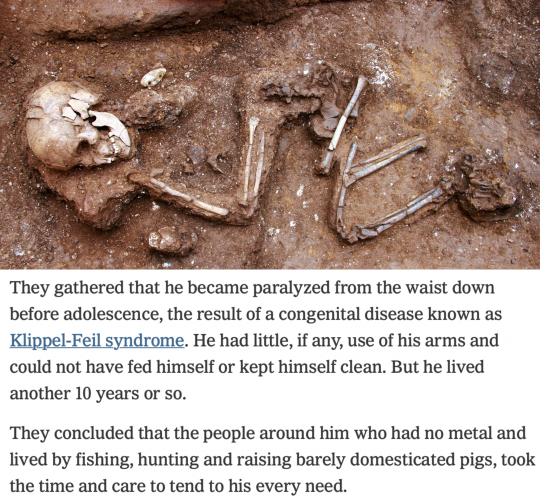
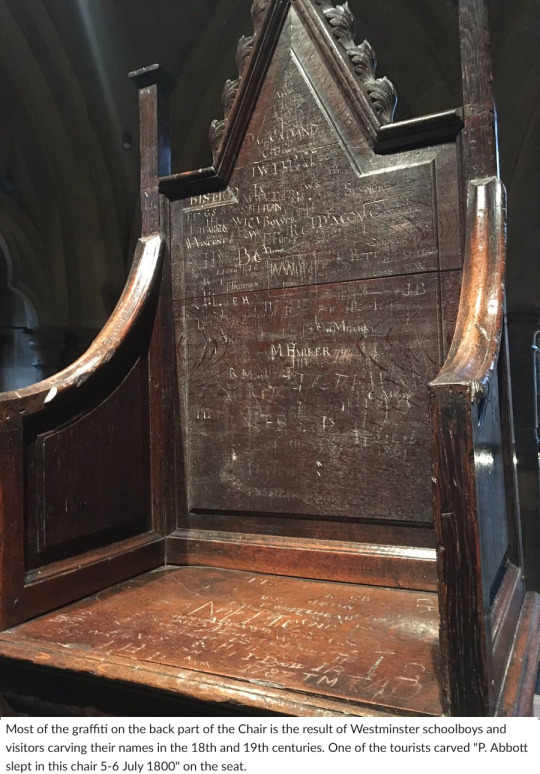
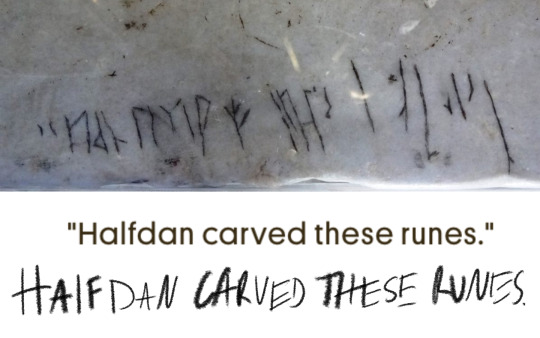
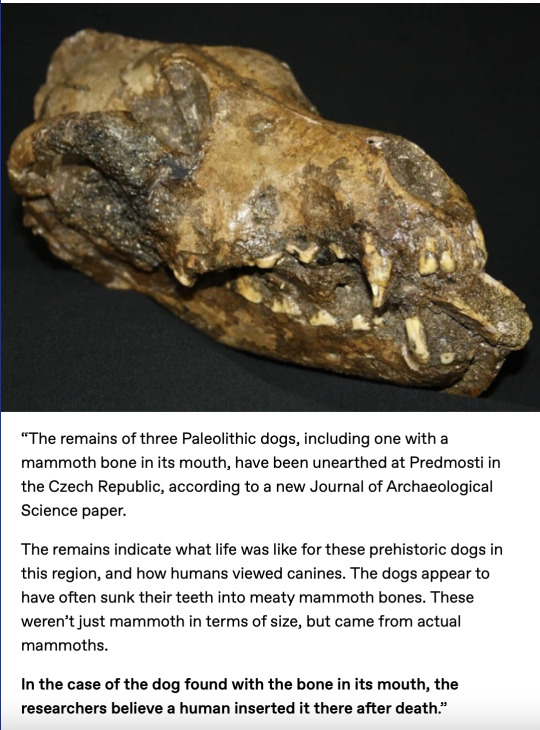




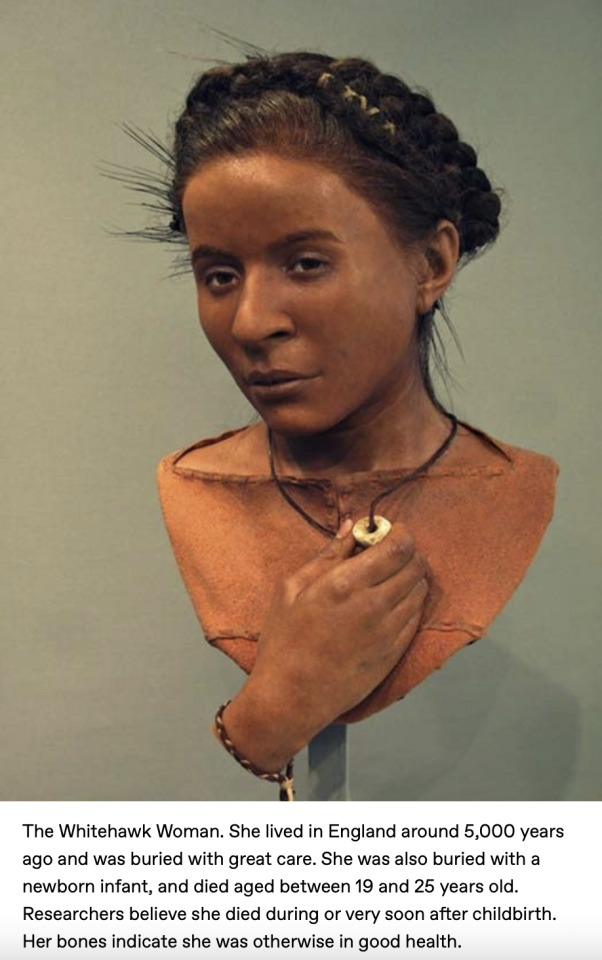


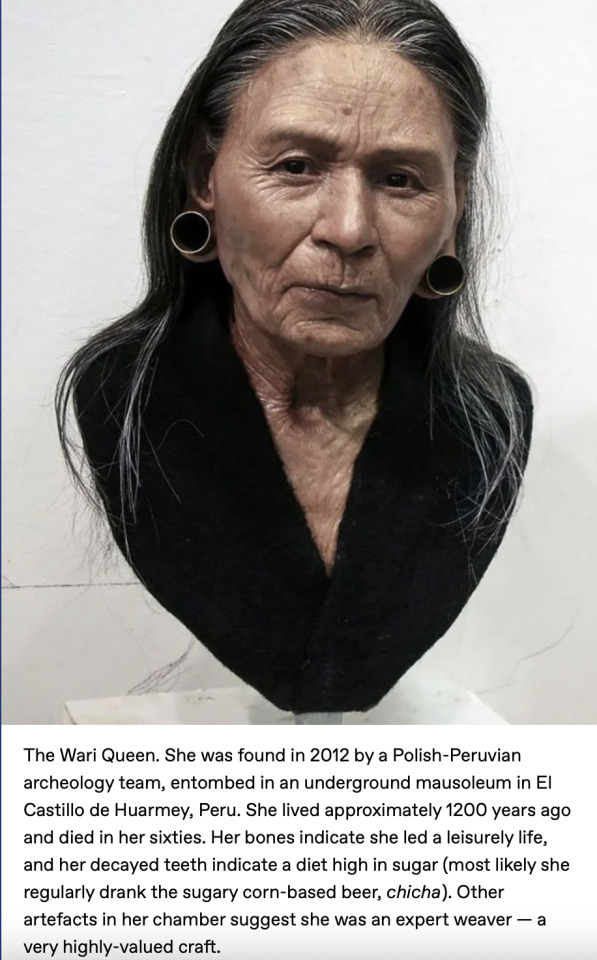




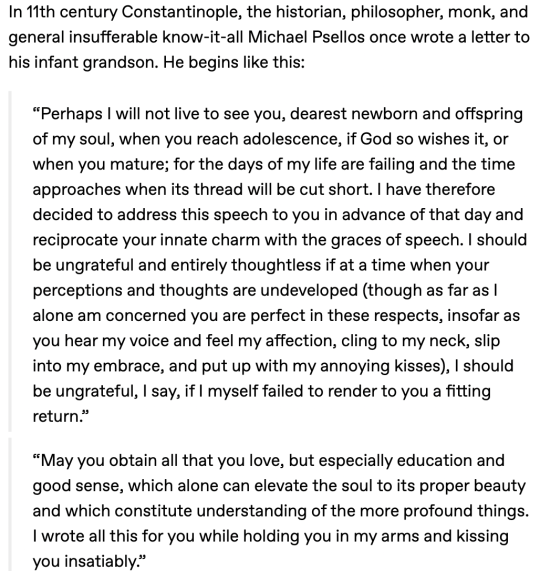


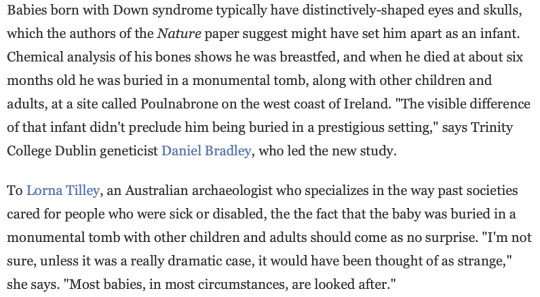





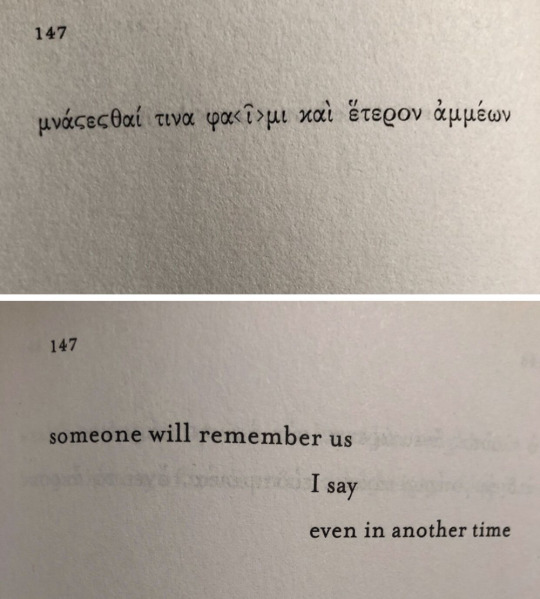
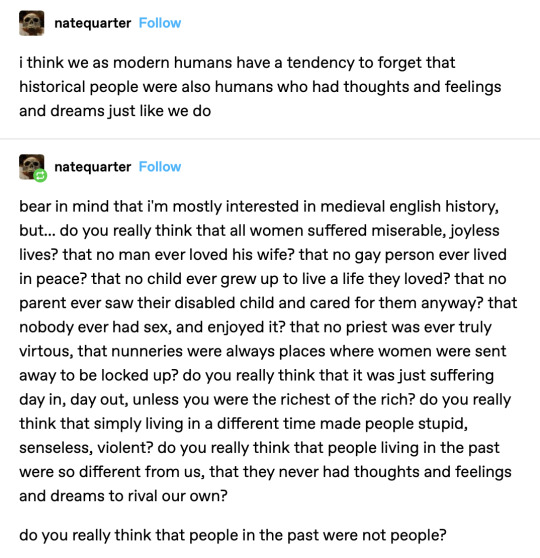

I have a folder called Time is a Flat Circle in which I collect evidence of humanity. Here is most of them.
#The letter written from the elder Michael Psellos to his grandson did me in#Full of nothing but tears
162K notes
·
View notes
Note
As a Greek i find hilarious and bitter that people still remember the ancient tales of our ancestors and are studied globally hoe well written they were but we modern Greeks don't produce that anymore like why?
Where did all the creativity go instead of making the same stories everyone globally make that sometimes don't even reflect our society?
I understand what you mean cause I've heard the same comment many times, but let me come to this from another angle.
Fuck what foreigners think. The ancient Greek works have great merit and no one in the world is wrong for studying them and appreciating them. However, the overstudy of these manuscripts has led to needless over-analyzing of texts and the overlook of other great Greek works. The Western world has focused so much on ancient Greek works and has talked only about them for such a long time that more than half the world has forgotten that Greeks existed beyond that era.
We have GREAT literary Greek works from medieval times. It wasn't "the Dark Ages" for us, baby! I'm talking about the Alexeiad, the Digenes Akritas Epic cycle, the satiric works "Timarion" and "Mazaris", the poem the "Spaneas", the (huuuge) "Fountain of Knowledge" by Ioannis Damaskinos, the historical work of Ioannis Malalas, the works of Mihail Psellos, the HUNDREDS of medical and scientific books, and other works that influenced the East and the West alike. That's just the tip of the iceberg!
Why don't we feel proud about those? Because we don't know them. Why don't we know them? Because it's not trendy to study these periods.
We also don't talk about the hundreds of amazing writers we had the last century - including those who got Nobels - because that's not trendy right now.
We have to stop seeing the value of Greek literature through the eyes of foreigners. We have to promote Greek works because we can't just wait for a Shannon in New Jersey, US, to discover it and like it, in order for us to appreciate it too.
Also, we cannot re-invent the wheel. Our ancestors wrote some great stuff for their era. In 2023 this stuff is still great but it's not THAT revolutionary. So there's no comparison in regards to novelty. But we can produce good works regardless.
Greece is not a colonial power or a former colonial power like the European "Big Powers" (these 8 countries), or an empire like the US. Our nation is still recovering for 400-600 years of slavery and occupation AND the dozens of traumatising conflicts and wars that came after that. We can't expect the same growth at the same numbers as these luckier countries. We can't afford as a nation to have extremely popular events and promote the arts like they do in LA, or in Berlin, or London. Let's be kind to ourselves.
In continuation of the previous point, Greece today doesn't have enough powerful publishing houses to back great writers. Our writers, except 4-5 names in the whole country, don't see a penny from their work even after selling hundreds of copies. Even if you earn something, it's not even enough for a month's groceries. So writers either have to choose to spend only 10% of their time writing, or 80% of their time writing and live penniless.
The creativity is there, but Greeks rarely have the time and resources to pursue their writing passion to the point of greatness.
38 notes
·
View notes
Text
L'imperatrice Zoe e l'icona che prediceva il futuro
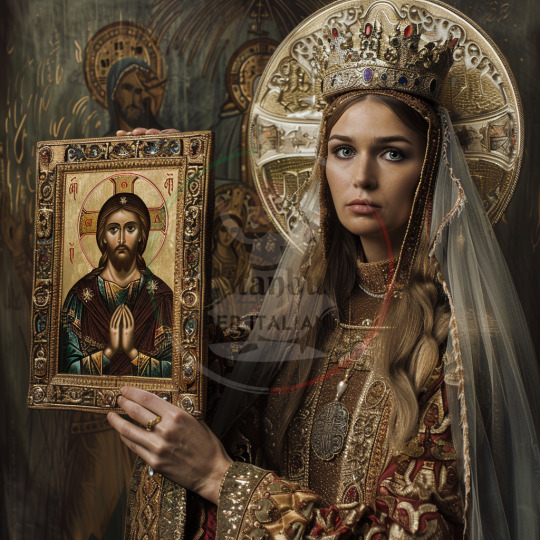
Per capire l'importanza delle icone nel mondo bizantino non possiamo che rivolgerci a Michele Psello il famoso filosofo, scrittore, politico e storico vissuto nella Costantinopoli del XI secolo. Uno degli uomini più colti del suo tempo. Michele Psello ci racconta di particolari molto interessanti sulla devozione che l'imperatrice Zoe Porfirogenita (978 – 1050) aveva sviluppato per una icona.
L'imperatrice Zoe aveva fatto commissionare una icona del Cristo "Anthiphonetes" (Cristo il "garante", "colui che garantisce") facendola collocare nella chiesa Chalkoprateia, una delle chiese più grandi di Costantinopoli (E' rimasto ancora qualcosa di questa chiesa magari un giorno ve la farò vedere).
Ma vediamo cosa scrive Psello nel Libro VI della sua Chronografia.
"Darò un esempio della devozione dell'imperatrice. Volle farsi realizzare un'immagine di Gesù, con la massima accuratezza possibile. La piccola figura, impreziosita da metalli lucenti, sembrava quasi viva. L'immagine cambiava colore in base alle risposte per le domande che venivano poste, ed annunciava spesso anche eventi futuri. Zoe riportò diverse profezie attraverso lo studio di questa immagine. Così, quando le capitava qualche evento positivo esprimeva gratitudine all'icona. Quando le capitava qualche disgrazia implorava clemenza. Io stesso l'ho vista stringere tra le mani l'oggetto sacro, contemplarlo, parlargli come se fosse davvero vivo, usando anche termini affettuosi. Poi altre volte l'ho vista stesa a terra, lacrimante, mentre si batteva e ribatteva fortissimo il petto. Se avesse visto l'immagine impallidire, se ne sarebbe andata avvilita, ma se l'immagine assumeva un colore rosso fuoco, con l'alone splendente di una bella luce radiosa, non avrebbe perso tempo nel raccontare e profetizzare all'imperatore un futuro successo".
Alla sua morte l'imperatrice Zoe fu sepolta proprio in questa chiesa dove passava così tanto tempo.
Autoproduzione digitale in AI realizzata il 27/2/24 by Istanbulperitaliani. La mia Vita a Istanbul: consigli e informazioni turistiche. Disponibile come GUIDA per delle ESCURSIONI in città. Scrivi una e-mail a: [email protected] anche su www.facebook.com/istanbulperitaliani
2 notes
·
View notes
Text
Works of Robert Kegan & Michael Psellos
with book "Being and time of Martin Heidegger"
show how conceptualisations of Quantum world are a PSYCHOLOGICAL science whose helpful inversed probability calucations due time-delay-flow of interaction-interpretation-loops
can be used as ironic entities to mathematically introspect in similar ways about larger system dynamics' inevitable habitually neglected discrepancy between
shared mind constructs & objective reality that we reduce & structure mentally via our conceptualisations🔠🎅🔢 of causality (reductionism)
like current from ontology detached pseudo-maths that makes scientists like autists cling onto their personal & socio-status-relational IDENTIFICATIONS with mimetic "observations"
(immunity to change Kegan)
https://www.youtube.com/watch?v=oiWH9b8zwi4
whose inevitably re-emerging gap with objective SYSTEMS potential (systems thinking)
thus by many is similar like done by ancient mathematicians tried to be expressed via all sorts of crazy "spiritual" (psychological metacognition) symbolic programming conceptualisations
https://prsinstitute.org/downloads/related/natural-sciences/microvita/CreativeVortexoftheCausalMatrix.pdf
in polarising distracting realm of by symbolic IDENTIFICATIONS distorted questions like
"is objective reality mind or matter"
many glorify or demonise regarding books on subpages of
https://armageddonconspiracy.co.uk/
when such to self-perceptional identity-constructs' & reputations' psychological bias filters tied questions
are REDUNDANT and USELESS as we will always perceive objective reality through concepts of our mind interfaces' shared prioritisation of what MATTERS to us
thus everything "PARTICuLare" we deem as "objective" or "causal" or "scientific" will always be psychologically ("spiritually") distorted by SUBJECTIVELY in conceptualisations in comparison arising dual polarities'
relation to "zero infinity singularity" of SUBJECTIVE "coordinate" system
of to our ob-server "eye" (I) RELATIVISTIC mind CONSTRUCTS like time created
"i"denitities
IMAGINARY mind focus positive motivation shadows' geometric s-pace ontology we solve via
numbers like "i"
youtu.be/f079K1f2WQk
1 note
·
View note
Text
I can understand 99% of this poem as a Greek speaker of medium (not low or high) literary ability. A percentage going up to 99.5% with context, and if I really think hard about the origin of words. The meter of the verses is an ancient type, and still popular in Greek. It can be found in our traditional songs. I can understand the craft and skill that went into composing this synopsis. I love the Greek language and it's continuity which allows me to comfortably read a text from a thousand years ago!
(Another reason why people should not for compare the evolution of Greek with the convoluted evolution of English.)
For the lovers of Odyssey: See if you can spot here the word "polytropos", which is used to describe Odysseus in the first verses of the Epic.
Finally, this post is hilarious to me because I imagine the young heir going "Oh, teacher, make this longer, why won't you?" 😂
11th Century Greek Grammar Lesson Poem
Michael Psellos (often latinised erroneously as Psellus) was a monk, philosopher, courtier and one of the most distinguished scholars of the Byzantine Empire. Among a lot of other works, he composed a group of educational poems for young heir Michael Dukas (1050-1090), son of Emperor Constantine X Dukas, teaching him on a variety of sciences. As he notes:
«Τοῦ αὐτοῦ Ψελλοῦ Σύνοψις διὰ στίχων σαφῶν καὶ πολιτικῶν περὶ πασῶν τῶν ἐπιστημῶν γενομένη πρὸς τὸν εὐσεβέστατον βασιλέα κῦριν Μιχαὴλ τὸν Δούκαν ἐκ προστάξεως τοῦ πατρὸς αὐτοῦ καὶ βασιλέως, ὥστε διὰ τῆς εὐκολίας καὶ ἡδύτητος ἐνεχθῆναι τοῦτον εἰς τὴν μάθησιν τῶν ἐπιστημῶν.»
“Synopsis by Psellos himself in comprehensible and political (?) verses about all the sciences, made for the most devout king* Lord Michael Dukas at the command of his father and emperor*, so that he will be initiated in the study of sciences easily and with pleasure.”
*Notably Psellos uses the term βασιλεύς (Greek for “king”) for both the emperor and his heir.
This post features a poem about Greek grammar. However, it is not about the technicalities or the grammatical rules but it is instead a very brief guide to help the young heir tell the various Greek dialects apart. By Greek dialects, Psellos does not refer to the local Greek idioms that were spoken across the empire at the time. He counts five dialects: Ionic, Attic, Aeolic, Doric and Koine Greek. The first four were the main dialects spoken by the Ancient Greek tribes. The last one, Koine (Common Greek), was the lingua franca and official language of the Eastern Roman (Byzantine) Empire, believed to have evolved from Attic specifically with some additional influences from the other ancient dialects. Psellos seems to believe that Koine is the aggregate of all previous four equally and even though he considers it "overused", he still thinks of it as superior to the ancient four.
Μελέτω σοι γραμματικῆς καὶ τῆς ὀρθογραφίας πρῶτος αὕτη θεμέλιος καὶ βάσις μαθημάτων. Οὐκ ἔστι δὲ μονότροπος οὐδὲ κοινὴ καὶ μία, ἀλλ’ ἔχει γλώσσας καὶ φωνὰς καὶ πέντε διαλέκτους, Αἰολικήν, Ἰωνικήν, ᾿Aτθίδα καὶ Δωρίδα καὶ τὴν συνήθη καὶ κοινὴν καὶ κατημαξευμένην· ἑκάστη δὲ διάλεκτος ἔχει φωνὰς ἰδίας. ἡ δὲ κοινή, κἂν πέφυκεν ἄθροισμα τῶν τεσσάρων, ἀλλ’ ἔστι καὶ μονότροπος, ἄλλη παρὰ τὰς ἄλλας. Aλλ’ ὡς ἐν παραδείγματι δεικτέον σοι τὰς πέντε. τὸ μὲν γὰρ ‘Πέρσης Πέρσεω’ τυγχάνει τῆς Ἰάδος (ἣν εἶπον γὰρ Ἰωνικὴν καλῶ σοι νῦν Ἰάδα, Ἰὰς γὰρ ἀπὸἼωνος· διώνυμος ἡ κλῆσις). ὣς δὲ τὸ ‘Δημοσθένεος’ γενικῶς τῆς Ἰάδος καὶ τὸ ‘Περσέων’ γενικῶς, ὣς δὲ καὶ τὸ ‘νυμφέων’· εἰ δέ τις μεταλλάξειε καὶ λέξειε ‘νυμφάων’, Αἰολικὴν διάλεκτον εἶπεν, οὐ τὴν Ἰάδα. εἰ δέ τις εἴποι ‘θάλατταν’ ἢ ‘τεῦτλον’, ᾿ Aττικίζει. εἰ δέ τις ὀνομάσειε τὰς Μούσας ‘Μώσας’ πάλιν, ὑποδωρίσας εἴρηκε Δωρίδι διαλέκτῳ. ἡ δ’ Αἰολὶς διάλεκτος τῷ ῥῶ βῆτα προσνέμει, ‘βράκος’ τὸ ῥάκος λέγουσα, ‘βρυτῆρα’ τὸν ῥυτῆρα. εἰ δέ τις εἴποι ‘θάλασσαν’ καὶ ‘ῥάκος’ καὶ ‘ῥυτῆρα’, κοινὴν εἶπε διάλεκτον ἤτοι συνηθεστάτην. ταύτην μοι μόνην δίωκε, τῶν δ’ ἄλλων καταφρόνει. Καὶ τοῦτο δέ μοι γίνωσκε καὶ μή σε λανθανέτω· χρόνοι πολλοὶ λελοίπασιν ἔν τισι τῶν ῥημάτων καὶ πρόσωπα πληθυντικὰ τῆς κοινῆς διαλέκτου, ἀλλ’ ἀντανεπληρώθησαν ἐξ ἄλλων διαλέκτων. Τὸ τρίτον τῆς γραμματικῆς τοῦτο τυγχάνει μέρος, ἱστοριῶν ἀπόδοσις καὶ γλωσσῶν πολυτρόπων. ἑκάστη γὰρ διάλεκτος παμπόλλους ἔχει γλώσσας. ἡ γὰρ Δωρὶς διάλεκτος ἔχει τοιάσδε γλώσσας, ᾿Aργείων Κορινθίων τε καὶ τῶν Συρακουσίων· ἡ δ’ Αἰολὶς τῶν Βοιωτῶν, πρὸς δὲ καὶ τῶν Λεσβίων. ὀφείλει δ’ ὁ γραμματικὸς εἰδέναι καὶ τὰς γλώσσας· Ἰάδος γὰρ τὸ ‘πίσυρες’, ἀλλὰ Συρακουσίων.
Translation in English:
"Let grammar and dictation be your concern; that is the first foundation and basis of sciences. It is, however, not of one kind nor is it common and the same, but it comprises tongues and idioms and five dialects, Aeolic, Ionic, Attic and Doric and the usual, common and hackneyed; and each dialect has its own sounds. And the common, even though it is an aggregate of the four, it is nevertheless also of one kind, different in comparison with the others. But the five have to be shown to you by way of example. For the inflection ‘Πέρσης Πέρσεω’ happens to be from the Ionic speech (for the speech they called Iōnikè, I shall now call it for you Ias, for Ias derives from Iōn; the appellation consists of two names). As the form ‘Δημοσθένεος’ is the way in which the genitive is conveyed in Ionic as well as the form ‘Περσέων’, thus is also the form ‘νυμφέων’; but if one altered it and said ‘νυμφάων’, he spoke the Aeolic dialect, not the Ionic. But if one says ‘θάλαττα’ or ‘τεῦτλον’, he speaks Attic. But if one names in turn the Muses ‘Μῶσαι’, he speaks in the Doric fashion and talks in the Doric dialect. And the Aeolic dialect adds a beta to the rho, saying the word ‘ῥάκος’ as ‘βράκος’, the word ‘ῥυτήρ’ as ‘βρυτήρ’. But if one says ‘θάλασσα’, ‘ῥάκος’ and ‘ῥυτήρ’, he spoke the common or the most customary dialect. Follow this one alone indeed, and look down upon the others. But know this indeed and may it not escape you: many tenses are lacking in some of the verbs and also plural persons of the common dialect, but they are filled up by other dialects. This happens to be the third part of grammar, the explanation of ‘histories’ and various tongues. For each dialect comprises numerous tongues. For the Doric dialect comprises the following tongues, that of the Argives, that of the Corinthians and that of the Syracusans; and the Aeolic that of the Boeotians, but also that of the Lesbians**. The grammarian is obliged to know also the idioms, for ‘πίσυρες’ [derives] from Ionic, but [also] from the Syracusans."
**The islanders, not the homosexual women.
Source: Poem found in the scientific article
Teaching Greek grammar in 11th-century Constantinople. Michael Psellus on the Greek 'dialects', Raf Van Rooy, Byzantinische Zeitschrift, 2016.
#Hellenic language#Greek language#langblr#linguistics#Byzantine#Byzantium#classics#odyssey#greek history#Byzantine empire#Hellas#Michael Psellos#Michael Dukas
33 notes
·
View notes
Text
i think i need more byzantines that is what my heart has been longing for but the question is someone from annas period or prokopios' .... without an anchor such as these one should be entirely lost
0 notes
Photo

Michel Psellos
Michel Psellos (1018- c. 1082) était un historien, un écrivain et un intellectuel byzantin. Il fut le courtisan et le conseiller de plusieurs empereurs byzantins et le précepteur de Michel VII. Rédigés entre 1042 et 1078, ses textes mêlent théologie, philosophie et psychologie. Son œuvre la plus célèbre est la Chronographie, une série de biographies d'empereurs et d'impératrices, qui s'est révélée être une source inestimable sur l'Empire byzantin du XIe siècle.
Lire la suite...
1 note
·
View note
Note
Hello!!! I was reading this post of yours (for my research) and i'm truly wondering how did Byzantine princesses wanted to take a bath?? Do you have a post for that?
I don't but I managed to find a few pieces of information about the general habits of Byzantine bathing and grooming, and particularly that of the empresses and the princesses.
"The wealthy and noble women of the empire were concerned with their looks and Christianity cast no pall on the baths nor the sale of cosmetics and perfumes. (...) Byzantine gardens, therefore, had areas set aside for aromatic flowers from which could be distilled some of the more fragrant oils. (...) Mirrors, tweezers and similar hygiene equipment would have been commonplace in a Byzantine home. (...) Michael Psellos wrote that (Empress) Zoe turned her chambers into cosmetics laboratory in which she created cosmetics and ointments to preserve her beauty well into old age. (...) Byzantine women did not use as heavy cosmetics as their earlier Roman counterparts. (...) For eye liner and darkening eye brows and lashes, kohl was very popular."
Source: http://gretchenbrownauthor.com/2018/04/08/cleanliness-and-hygiene-among-the-byzantines/
"Women washed their hair in special fragranced solutions that naturally lightened it, including saffron, turmeric, fern roots and citrin-colored sandalwood and rhubarb. The cloths they wrapped their hair in were usually brushed with perfume. People made their own scents at home. Lotions and creams were made fresh from natural sources and had to be used in a few days. (...) There were many public baths; the Byzantines - even monks and nuns - bathed frequently. One was expected to bathe twice a week. (...) The Byzantines had a wide variety of cleaning products for bodies and clothes."
Source: https://www.pallasweb.com/deesis/daily-life-in-constantinople.html
"Byzantines in the capital city of Constantinople developed public baths similar to those found in Rome, and public bathing was a daily ritual for many. (...) Unlike the Romans, who used a lot of makeup and cosmetics, the Byzantines avoided heavy preparations for their skin. Instead, they developed rich perfumes using ingredients obtained in trade from China, India, and Persia, modern-day Iran. Perfume making was developed as an esteemed trade."
Sources:
Baltoyianni, Chryssanthi. "Byzantine Jewelry." Hellenic Ministry of Culture. http://www.culture.gr/2/22/225/22501/225013/e013intro.html (accessed on July 29, 2003).
Cosgrave, Bronwyn. The Complete History of Costume and Fashion: From Ancient Egypt to the Present Day. New York: Checkmark Books, 2000.
"Let us now place ourselves in the second half of the 11th century, when a Byzantine princess arrives in Italy again; not in Rome but in Venice, although with the same nuptial purpose. This time she is Theodora Doukaina, daughter of Emperor Constantine X Doukas and Eudokia Makrembolitissa (the niece of Patriarch Michael I Cerularius) who is to marry Doge Domenico Selvo. (...) The Byzantine stravaganza of Theodora was reflected not only in the colossal retinue she led or the impressive tiara she wore at the ceremony (the one worn by her brother Michael VII, who had just inherited the imperial throne) but also in her own daily behaviour, which included such whims as bathing in the dew that his servants collected or – and here is what interests us – the refusal to touch food with her hands, so that she made use of a golden fork to prick the bites that her eunuchs had previously cut off."
Source: https://www.labrujulaverde.com/en/2020/06/how-two-byzantine-princesses-scandalized-europe-by-using-a-fork/
"While the Germans like Theophano, many of them thought her odd. The Byzantine empire was known for its luxurious, decadent ways, and Theophano was a product of that 'decadence'. She talked too much, she bathed every day, and, strangest of all, she used a two pronged utensil to bring food to her mouth (aka a fork), instead of eating with her hands like everyone else."
Source: http://www.thathistorynerd.com/2017/07/damn-girl-holy-roman-empress-theophano.html
Check here for a great link with detailed description of Byzantine public baths, how they worked and how they were taken
Peter Damian, the Cardinal Bishop of Ostia, wrote a chapter entitled "De Veneti ducis uxore quae prius nimium delicata, demum toto corpore computruit" ("Of the Venetian Doge's wife, whose body, after her excessive delicacy, entirely rotted away.") about an unnamed Byzantine princess whose manners he considered scandalously lavish and which brought to her a horrible death as a divine punishment. This woman has been mistakenly (since Damian died 1072) identified with Domenico Selvo's wife by later Venetian chroniclers (incl. Andrea Dandolo and Marino Sanuto the Younger) followed afterwards by various modern authors; however since the work in which Damianus' chapter is contained is dated ca 1059 it refers probably to Maria Argyropoulaina who had died a half century before.
From Wikipedia. Irrelevant but Maria Argyropoulaina might be the most modern Greek name I have seen in a medieval woman ever.
When, three days after the wedding, the new empress left her rooms to take her bath in the Palace of Magnaura, the court and the commonwealth gathered in queues behind her in the gardens. And when the empress passed with the servants who showed off the robes, the boxes with the perfumes, walking first, accompanied by three ladies of waiting who held apples decorated with pearls, as a symbol of erotic love, the commonwealth would cheer, the jesters of the court would make inappropriate jokes and the most important officers of the empire would escort the empress all the way to the entrance of the bath, where they waited for her to finish, and escorted her back to her bridal chambers.
Source: From The History of the Byzantine Empire by Charles Diehl, translated by me here.
They don't go into great detail as you see but I guess they are enough to give you an idea. Reminder to check the link I added above about the detailed description of the public baths - it is very interesting!
#history#middle ages#byzantine empire#byzantine culture#eastern roman empire#greek history#byzantine history#greek culture#anon#ask
33 notes
·
View notes
Text
the punchline, of course, is that after his superstar brother Basil died unwed and childless, an elderly Constantine would wind up on the throne anyway!
Both princes had seen the last of their boyhood days, but their interests lay far apart, for whereas Basil, the elder of the two, always gave an impression of alertness, intelligence, and thoughtfulness, his brother was to all appearances apathetic, passing a lazy existence, and devoted to a life of luxury. It was natural, therefore, that they should abandon the idea of a diarchy. By mutual consent all real power was vested in Basil, and Constantine was associated with him as emperor in name only.... There is perhaps something admirable in Constantine's renunciation of most of his privileges on this occasion, because legally he was entitled to share his father's inheritance on equal terms with his brother--and by 'inheritance' I mean the Empire. What makes his decision the more remarkable is the fact that he was very young at the time, just at the age, in fact, when lust for power is most easily kindled. ... It is only right, therefore, that I should pay this tribute to the younger brother at the outset of this history.
most backhanded praise ever. "kudos to him for realizing he sucked, and getting out of the way"
#psellos describes him as emperor as ‘surprisingly less stupid than I expected. still pretty foolish though’#byzantium
42 notes
·
View notes
Text
This is what the authors of the “Mithras Liturgy” and the Chaldaean Oracles are telling us, but we are still left at the level of pure description. How are we to understand what we are reading here? To be more precise: what could have been happening to the practitioner that would convince her that she was actually drifting upwards in the air, entered a great silence, and beheld the heavenly bodies as living beings?
This question is the elephant in the room of modern scholarship on theurgy – almost without exception, even the most knowledgeable and perceptive specialists ignore or avoid it. This silence is all the more remarkable because at least in the case of the “Mithras Liturgy,” it so happens that the keys for a plausible solution are readily available. We have seen that the gods appeared to the theurgist by “taking possession” of his luminous vehicle and activating its imaginative powers.
Michael Psellos (who had access to materials that we no longer possess) writes that according to Proclus, the vehicle is “empowered” (dunamōsomen) or “purified” (kathairesthai) by means of “stones, herbs, and incantations”:
The Chaldaean says that we cannot be borne upwards towards god, unless we empower the vehicle of the soul by material sacraments. For he believes that the soul is purified by stones, herbs and conjurations and consequently becomes more agile with a view to the ascension.
Such a use of “herbs” is confirmed explicitly by the author of the “Mithras Liturgy”: “it is necessary for you, O daughter, to take the juices of herbs and drugs, which will be [made known] to you at the end of my sacred treatise.”
In sum, there is really no mystery here. Some kind of herbal concoction was required that would enable the pupil to inhale pneuma into her soul vehicle so that the gods could empower its imaginative faculties. The actual effect must have been enhanced by the simultaneous practice of inhaling the smoke of kuphi incense, a standard ingredient of such practices mentioned explicitly in our text.
We do in fact find a detailed recipe affixed to the “Mithras Liturgy.” You need to prepare a cake from honey and the fruit pulp of the lotus, and feed this to a sun scarab. It will kill the scarab, who must then be thrown into a glass vessel with high-quality rose oil; and having placed the vessel on “sacred sand,” a consecration must be spoken over it during seven days. Then the scarab must be buried in a piece of linen together with myrrh and Mendesian wine, finally resulting in an ointment that can be used for the ritual of ascent.
It is known that Egyptian water lilies (lōtos, genus Nymphaea) had narcotic and hallucinogenic properties, and myrrh (hcl) is described in the Demotic Magical Papyri as a component of an eye paint prescribed for visionary applications. Indeed, that is exactly what the author of the “Mithras Liturgy” appears to have in mind: “get the juice of the herb called kentritis, and smear it, along with the rose oil, around the eyes of whomever you wish; and he will see so clearly that you will be amazed (thaumazein).”
‘This kentritis plant and several other ingredients have so far resisted identification, but clearly the authors of the Papyri knew them and were able to prepare the ointment. Apart from this substance that was to be rubbed into the eyes, or smeared around it, we are also told about letters (ϊ εε οο ϊαϊ) that must be written on a leaf with an ink made of kentritis, honey, and myrrh, and then licked off. The author claims that he has often done this himself and has been “super-amazed” (huperethaumasa) by the effect.
These instructions make perfect sense, for the Greek Magical Papyri contain literally dozens of references to myrrh, not only as a psychoactive agent but also as a component of black ink for the writing of ritually important words, characters, or pictures. Since we cannot decipher all the components of these recipes, the exact psychological effects of combining myrrh, water lilies, and kentritis with other unidentified ingredients, while simultaneously inhaling kuphi, must remain a matter of speculation.
However, we can be confident that they would have a strong impact on the state of consciousness of theurgical practitioners, making them highly sensitive and receptive to suggestion while inducing powerful visual and possibly auditory hallucinations.
-- Wouter J. Hanegraaff, Hermetic Spirituality and the Historical Imagination: Altered States of Knowledge in Late Antiquity
0 notes
Text
There are quite a lot of other names involved, but it seems like Medieval Byzantine philosophy may quite reasonably be separated into "Michael Psellos" and "not Michael Psellos"
4 notes
·
View notes